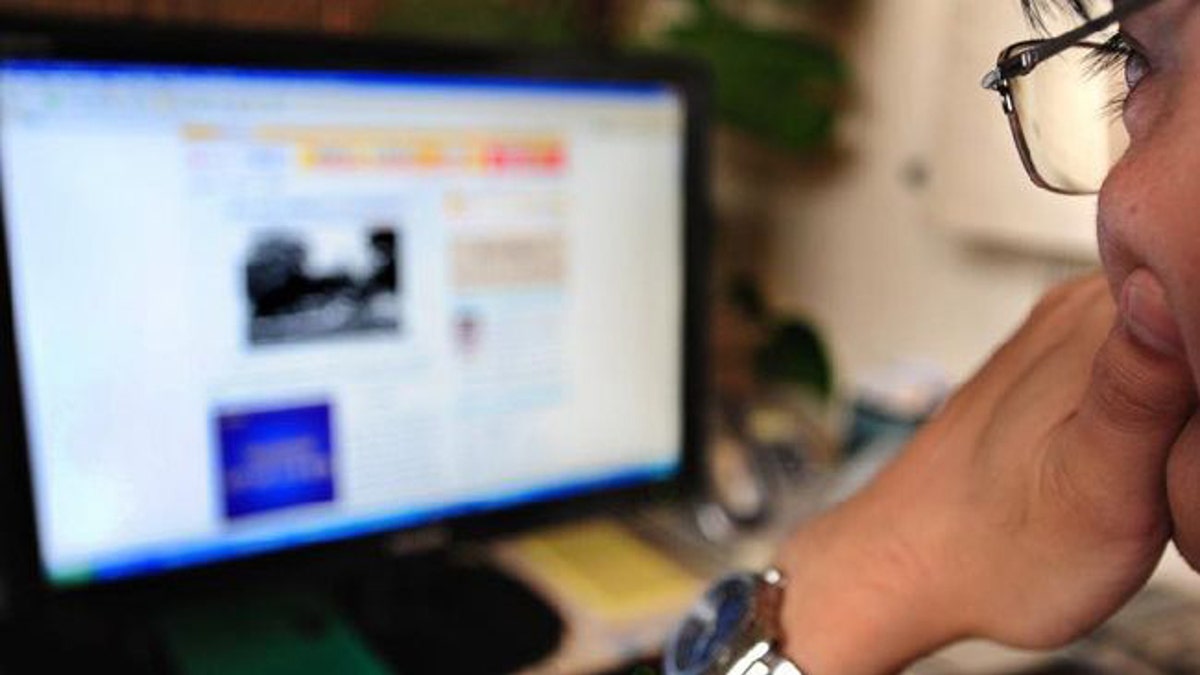
Users could face painfully slow connection times on the IPv6 system. (AFP)
Update: An editors' note appears at the bottom of this story.
It's the end of the web as we know it.
Every Internet-connected computer, smartphone, car, gadget and gizmo is assigned an IP address that lets it communicate with the net, thanks to a system known as IPv4 (Internet Protocol version 4). And the flood of new gadgets means we're running out of those addresses.
"That distribution system is coming to a close," said Geoff Hutson, the chief scientist at the Asia Pacific Network Information Center (APNIC). “In the coming few days and weeks -- no longer -- the central pool is going to run out.”
It's not even difficult to fix. Web developers have compensated for this problem by creating IPv6 -- a system which recognizes 128-bit addresses as opposed to IPv4's 32-bit addresses.
But IPv6 isn't backwards-compatible with IPv4, meaning that it's not able to read most content that operates on an IPv4 system. At best, the user experience will be clunky and slow. At worst, instead of a webpage, all users will be able to view is a blank page.
Hutson said the problem and solution for the IP address shortage presents the classic Catch-22 situation.
“IPv6 is not backwards compatible. If I changed my mobile phone to run IPv6 rather than IPv4, then all of a sudden I wouldn’t be able to see the IPv4 network -- none of it. Nobody. Nothing.
“We’re not going to do that.
“No one is going to turn themselves off the Internet just by running v6, so for some years we need to run both protocols at once. We need to equip devices with both IPv4 and IPv6.
“Now that’s fine, except we’re running out of IPv4 addresses -- so we’re back at the start again.”
Though web developers and ISPs have known about this problem for years there aren’t presently any acceptable solutions.
Part of the reason ISPs and developers have been so slow to come up with a solution, is that there are no economic incentives to developing IPv6.
“This is not a case of ignorance,” Hutson said.
“Within this industry the IPv6 story is a very old story. It has been around for many many years. We’ve been constantly searching for understanding how to start this transition off.
“We keep on getting the problem that the economics of transition work against us.
“V6 doesn’t make a faster network. It’s the same protocol, it’s the same applications. There’s nothing that v4 can’t do so there’s no killer application in IPv6. If you turn on IPv6 tomorrow it’s still the same old Internet.
“With nothing to gain financially, they do know they have to do something, they don’t feel the urgency to do it today. And that has been the case for some years. Now the situation is getting a little bit desperate because the number of 'todays' are dwindling -- the number of days you can say that for and still think your customer base can grow is becoming limited.”
Hutson said the demand levels of Internet within the Asia Pacific region are so high that it will be a matter of four to five months before we run out of IPv4 IP addresses.
After that time Internet users and providers have genuine cause for concern.
Read more at News.com.au.
Editors' Note: An earlier version of this story erroneously described an IP address as consisting of four digits, rather than four sets of digits, and inaccurately described the IP address. This story has been updated to reflect the correction.
